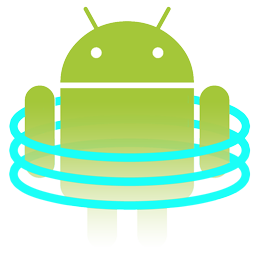Teleport - Data Sync & Messaging Library for Android Wear
Teleport is a library to easily setup and manage Data Syncronization and Messaging on Android Wearables.
The library is thought for Android Studio.
##Quick Overview
You can see Teleport as an Android Wear "plugin" you can add to your Activities and Services.
Teleport provides you commodity classes to easily establish a communication between a mobile handheld device and an Android Wear device.
TeleportClientprovides you "endpoints" you can put inside your Activities, both in Mobile and Wear.TeleportServiceis a full-fledged, already set-up 'WearableListenerService'.
Both these classes incapsulates all the GoogleApiClient setup required to establish a connection between Mobile and Wear.
TeleportClient and TeleportService also provide you two AsyncTask you can extend to easily perform operations with the synced DataItems and received Messages:
OnSyncDataItemTaskprovides you a completeDataMapof synced dataOnGetMessageTaskprovides you access to a received Messagepathin form ofString.
You just need to extend these tasks inside your Activity/Service and you're good to go!
To Sync Data and send Messages, you can use commodity methods like
sync<ItemType>(String key, <ItemType> item)to Sync Data across devicessendMessage(String path, byte[] payload)to send a Message to another device.
##Summary
- Library Set Up: How to import Teleport library in your project.
- TeleportClient in Activity: How to setup a TeleportClient.
- TeleportService: How to setup a TeleportService.
- Sync Data: How to Sync Data
- Send and Receive Messages: How to Send and Receive Messages
- Advanced Usage: AsyncTask Factory and Callbacks
##Can I have an example of how easy is Teleport to use?
There you go :-)
Here's a Mobile and a Wear Activity already configured to Sync Data.
- The MobileActivity synchronizes a string "Hello, World!".
- The WearActivity shows a Toast with the synchronized string.
###MobileActivity.java
public class MobileActivity extends Activity {
TeleportClient mTeleportClient;
@Override
protected void onCreate(Bundle savedInstanceState) {
super.onCreate(savedInstanceState);
setContentView(R.layout.activity_mobile);
mTeleportClient = new TeleportClient(this);
}
@Override
protected void onStart() {
super.onStart();
mTeleportClient.connect();
}
@Override
protected void onStop() {
super.onStop();
mTeleportClient.disconnect();
}
public void syncDataItem(View v) {
//Let's sync a String!
mTeleportClient.syncString("hello", "Hello, World!");
}
}
###WearActivity.java
public class WearActivity extends Activity {
TeleportClient mTeleportClient;
@Override
protected void onCreate(Bundle savedInstanceState) {
super.onCreate(savedInstanceState);
setContentView(R.layout.activity_wear);
mTeleportClient = new TeleportClient(this);
mTeleportClient.setOnSyncDataItemTask(new ShowToastHelloWorldTask());
}
@Override
protected void onStart() {
super.onStart();
mTeleportClient.connect();
}
@Override
protected void onStop() {
super.onStop();
mTeleportClient.disconnect();
}
public class ShowToastHelloWorldTask extends TeleportClient.OnSyncDataItemTask {
@Override
protected void onPostExecute(DataMap dataMap) {
String hello = dataMap.getString("hello");
Toast.makeText(getApplicationContext(),hello,Toast.LENGTH_SHORT).show();
}
}
}
Jump to Library Set Up !!!
##Follow me on Author: Mario Viviani 

##Thanks to: Damien Cavaillès - https://github.com/thedamfr
##License
Teleport is released under the Apache License 2.0
Copyright 2014-2015 Mario Viviani
Licensed under the Apache License, Version 2.0 (the "License");
you may not use this file except in compliance with the License.
You may obtain a copy of the License at
http://www.apache.org/licenses/LICENSE-2.0
Unless required by applicable law or agreed to in writing, software
distributed under the License is distributed on an "AS IS" BASIS,
WITHOUT WARRANTIES OR CONDITIONS OF ANY KIND, either express or implied.
See the License for the specific language governing permissions and
limitations under the License. 